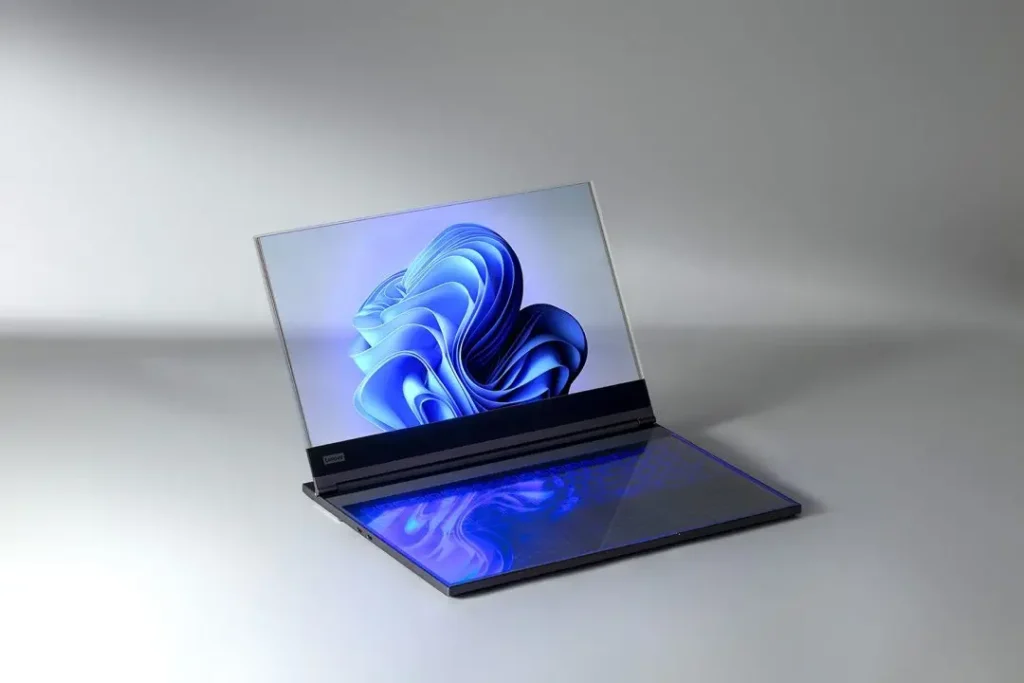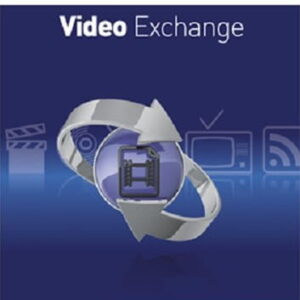At Mobile World Congress 2024, Lenovo unveiled a captivating concept device called Project Crystal, grabbing headlines with its transparent microLED display. While not yet confirmed for mass production, let’s delve deep into this innovative project, exploring its potential, practicalities, and the questions it raises.
A Glimpse into the Future:
Project Crystal’s most striking feature is undoubtedly its transparent display. Imagine a laptop where you can see through the screen, allowing you to interact with the digital world while simultaneously keeping an eye on your physical surroundings. This opens up intriguing possibilities in various fields:
- Architects and designers: Visualize their creations in real-world environments.
- Gamers: Overlay game elements on physical spaces, blurring the line between reality and the virtual world.
- Artists and creators: Interact with digital tools while maintaining a connection to their physical canvas.
Technical Innovations under the Hood:
The transparent display is achieved through a combination of technologies:
- MicroLED: This cutting-edge display technology offers incredible brightness, contrast, and color accuracy, making it well-suited for transparent applications.
- Gorilla Glass: Two layers of Gorilla Glass sandwich the microLED panel, ensuring durability and scratch resistance.
- Transparent adhesive: This specialized adhesive holds the entire structure together while maintaining its transparency.
Beyond the Glitz: Practical Considerations:
While Project Crystal presents an exciting glimpse into the future, it’s crucial to consider its practical limitations:
- Limited resolution: The 720p resolution might seem underwhelming on a 16-inch display, especially for content creators and professionals.
- Privacy concerns: The transparent nature of the display raises questions about user privacy and the potential for unintended screen sharing.
- Bulk and weight: The current prototype is reported to be bulky and heavy, hindering its portability.
- Uncertain cost: With innovative technology comes a potentially high price tag, making it potentially inaccessible for many users.
Exploring the Potential Impact of Project Crystal
While the technical specifications and functionalities of Project Crystal are captivating, its potential impact extends far beyond individual users. Let’s delve deeper into the broader implications of this innovative device:
Redefining User Experience:
Project Crystal could revolutionize how people interact with technology. The transparent display could foster a more immersive and natural user experience, particularly in fields like:
- Education: Imagine interactive learning environments where students can seamlessly transition between physical and virtual resources.
- Healthcare: Transparent displays could facilitate remote consultations and procedures, allowing specialists to virtually assist patients even when physically distant.
- Engineering and design: Project Crystal’s transparent nature could empower engineers and designers to visualize and manipulate 3D models in real-world contexts, streamlining the design and development process.
Privacy and Security Considerations:
The transparent nature of the display raises significant concerns regarding user privacy. Potential solutions could include:
- Privacy filters: Similar to those used on laptops, a user-controlled filter could render the screen opaque when desired.
- Software-based solutions: Developing software that detects sensitive information and blurs it on the display could offer an additional layer of privacy protection.
Impact on Existing Industries:
Project Crystal’s widespread adoption could disrupt existing industries in unexpected ways:
- Gaming: The potential for overlaying game elements onto physical spaces could create entirely new gaming experiences, blurring the line between reality and the virtual world.
- Retail: Imagine trying on clothes virtually while simultaneously seeing how they look in the real world, potentially revolutionizing the online shopping experience.
- Real estate: Project Crystal could facilitate remote property viewings and virtual tours, potentially impacting the way individuals and businesses approach the real estate market.
Ethical Considerations and the Future:
As with any innovative technology, Project Crystal raises ethical concerns that need careful consideration. Addressing these concerns responsibly is very crucial to ensure its development and implementation align with societal values:
- Accessibility: Ensuring equitable access to this technology for individuals from all socioeconomic backgrounds is paramount.
- Mental health and well-being: The potential impact of constant exposure to virtual elements on mental health and well-being needs to be thoroughly studied and addressed.
- Data security and privacy: Robust security measures must be developed to protect user data and prevent unauthorized access, especially with a device that could potentially expose sensitive information visually.











